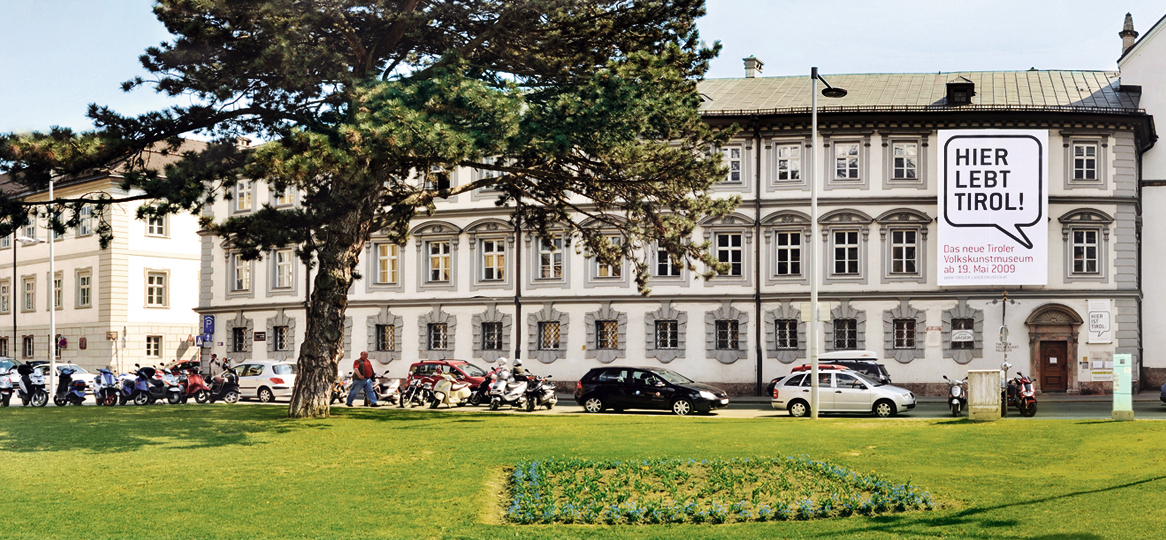Getting to know Tyrol
I had always lived on islands – namely, Taiwan and Great Britain – where geographic borders are clear and simple. Two years ago, after moving to landlocked Austria surrounded by eight countries, I found myself in need of a different mindset. It’s like someone who has ever only bathed alone at home suddenly sits in a packed sauna among a bunch of strangers. Being a newbie here, I thought of revising what I (should have) learned about geography and history in high school. Did the “Holy Roman Empire” cause me headaches back then? Well, it still does!
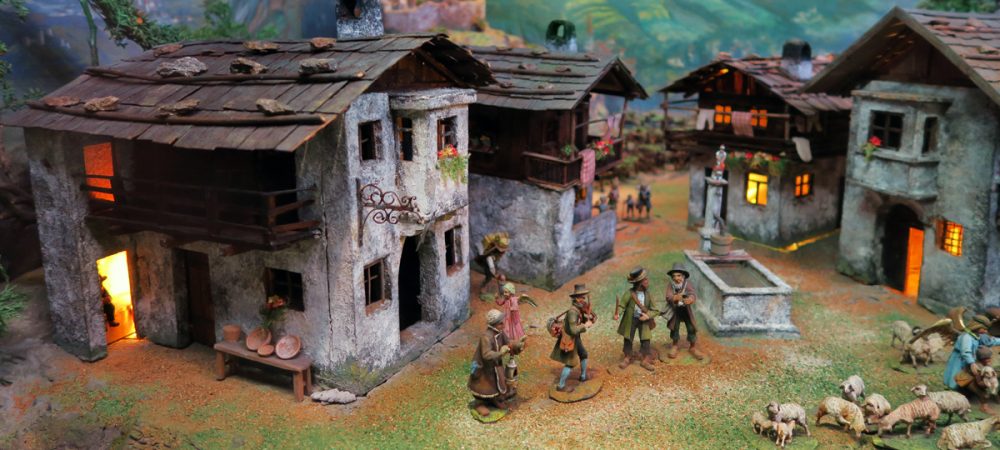
An outstanding collection of Tyrolean nativity scenes can be found in Tiroler Volkskunstmuseum.
Once I looked beyond the changing political borders, Tyrol swiftly stood out as a distinct cultural region for me to focus on. It lies entirely within the Eastern Alps and is an important gateway between north and south. The spectacular mountains, lively rivers and refreshing air are a constant reminder of nature for its people. The terrain, climate and natural resources influence Tyrolean cuisine, fashion, architecture, transportation, seasonal events and more. Collectively, they lead to a stronger sense of regional identification. The people in Tyrol did not shy from fighting for their land and lifestyle.
A Wonderful Place to Start
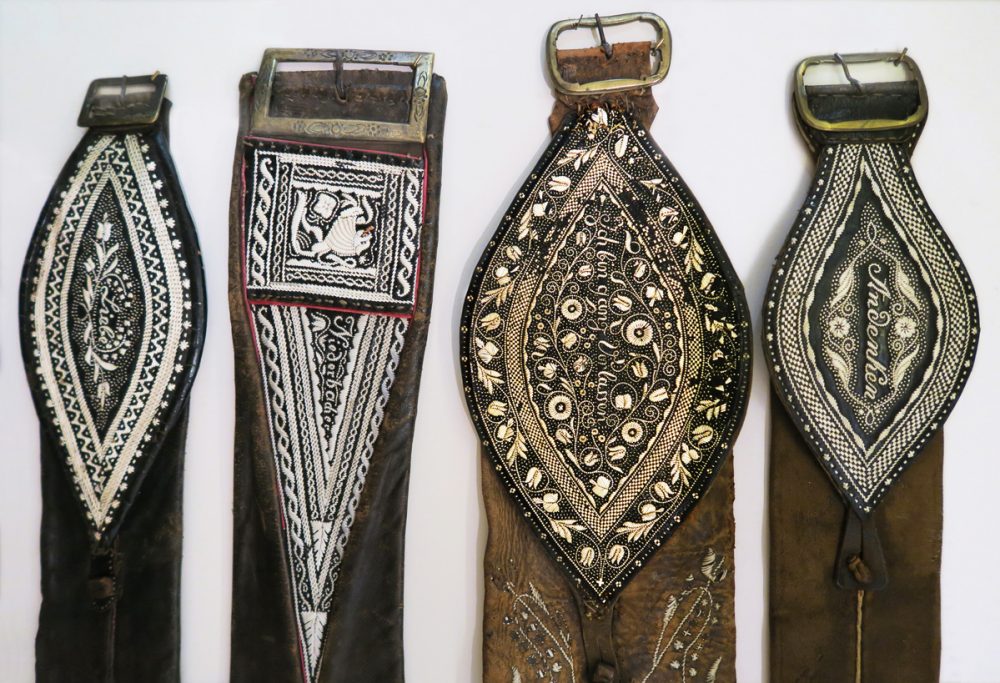
Personalized leather belts with quill embroidery became fashionable at the end of 18th century.
If Tyrol is on your itinerary, I certainly recommend a visit to the Tiroler Volkskunstmuseum (Museum of Tyrolean Regional Heritage*), especially because many items in the collection still have a presence in modern life here. What you see inside might explain what you have been wondering outside. There are personal garments, household tools, interior furnishing as well as equipment used for economic activities and festive rituals within the community. On the spiritual side, the objects related to religions and beliefs reflect people’s wishes and attitude towards each stage of life.
Tiroler Volkskunstmuseum Highlights
This museum is also for you, if you simply want to be amazed! There are plenty of enchanting treasures. My personal favourite is the “Pralles Jahr” area where you find magnificent festive masks, headgears and dresses. Great craftsmanship meets wise symbolism. Some of these “Fasching” carnivals are only held once every few years, so this is a great place to see them out of carnival seasons.
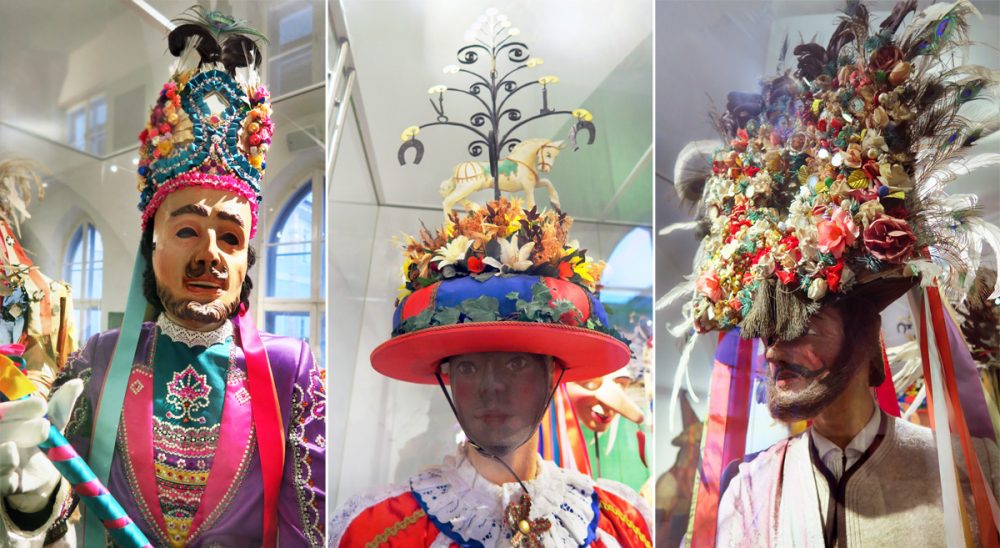
These “Fasching” characters are from Nassereith, Telfs and the MARTHA Villages (left to right).
“Prekäres Leben” is another intriguing area to stimulate your imagination. It’s about greater questions in life. For example, the iron figure in the picture below appears to be a captive shackled in chains. Was it made with the idea of remorse and redemption?
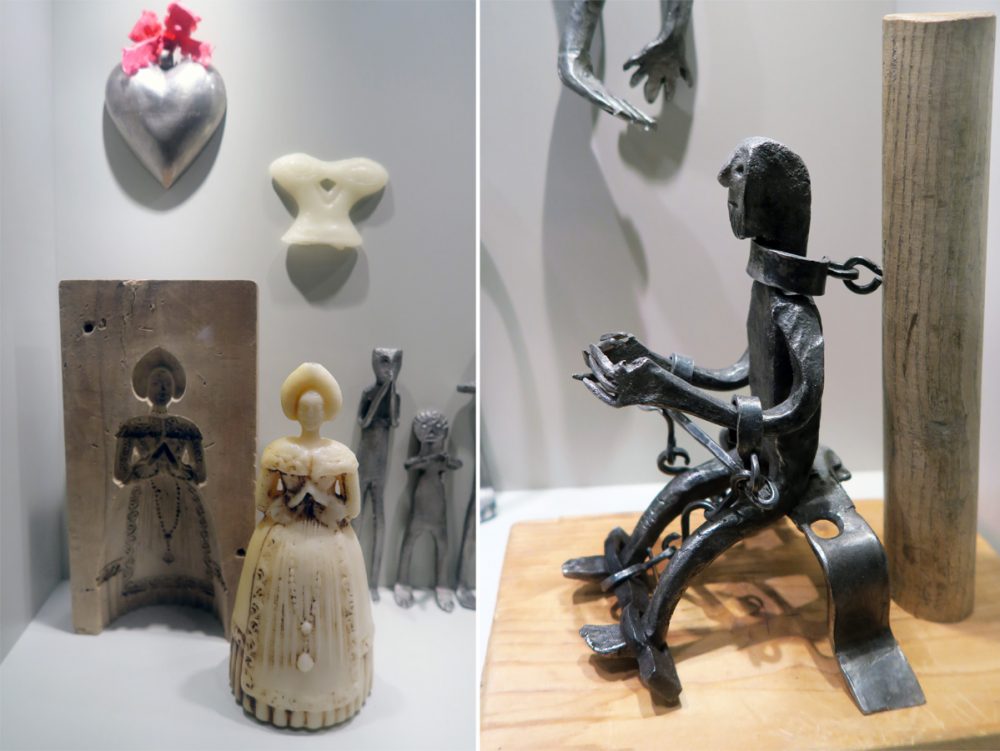
The items used for rituals are both symbolic and realistic.
The “Stuben” area consists of several wood-panelled rooms with great atmosphere. Although dreamlike for me, they are actually realistic representations of Tyrolean sitting rooms – or a walk-in time machine. This area is also the backdrop of changing exhibitions.
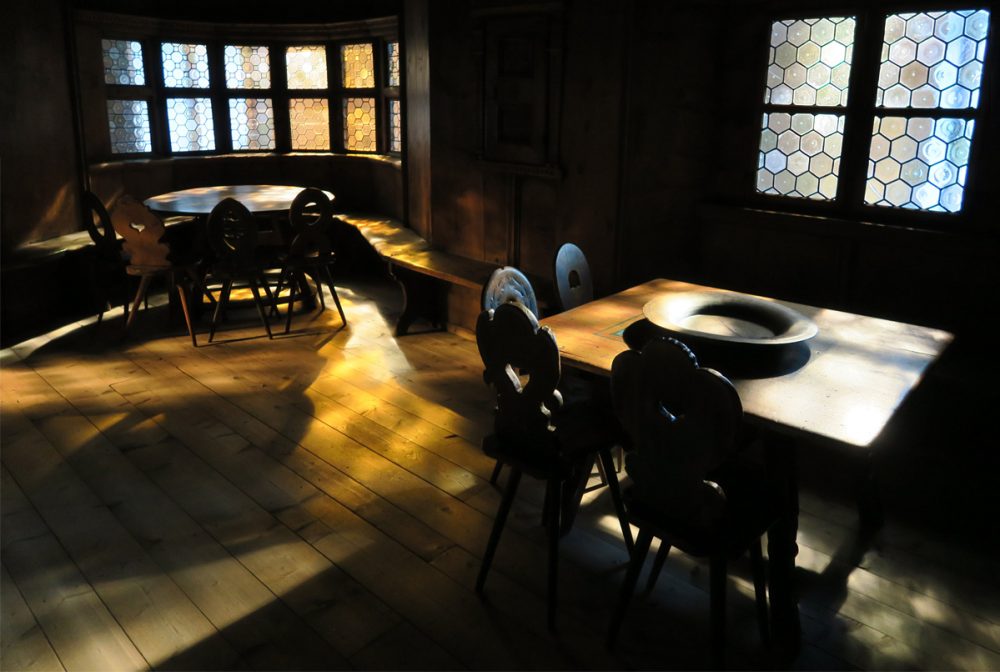
I would totally love to have a sitting room like this!
As you enter the “Trachten” area, the automatic lighting brings 48 hand-carved figures back to life. They wear 19th century Tyrolean outfits and each have their own facial expression. These diverse ensembles originated from various locations and social status. Some are especially posh.
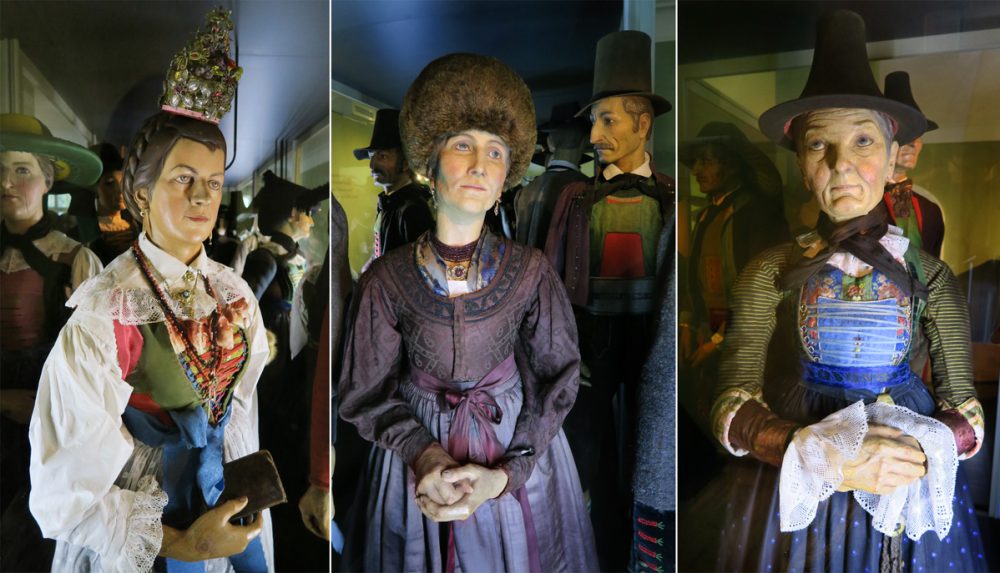
Several ladies wear delicate chatelaines and jewellery.
Enjoyable and Informative
Tiroler Volkskunstmuseum is of good scale and conveniently located in Innsbruck, the Tyrolean capital. Do pick up a digital guide on your way in (at no additional cost). I used the English one and it’s quite informative. As a quick reader, I appreciate that it is in the form of text, not audio. The guides are also available in German, Italian and French.
Enjoy your visit!
Tiroler Volkskunstmuseum
Address: Universitätsstrasse 2, 6020 Innsbruck
Website: www.tiroler-landesmuseen.at
Opening Hours: 09:00 – 17:00 daily, closed on 1 Jan and 25 Dec
For admission and actual opening hours, please refer to the official website.
*Geographically, its collection covers Tyrol (including now Italian Südtirol), Trentino and the Ladin valleys in the Dolomites.
*Photo credits: All photos by Ichia Wu except the one at the top which is by TVB Innsbruck / Volkskunstmuseum

